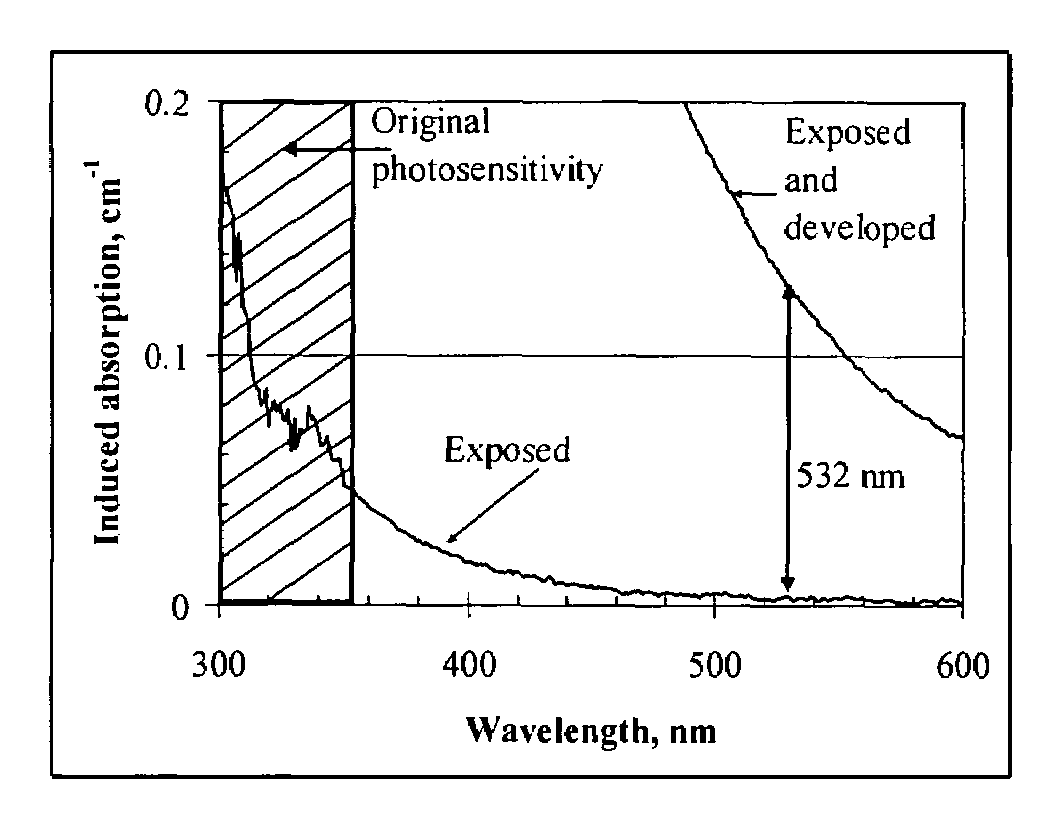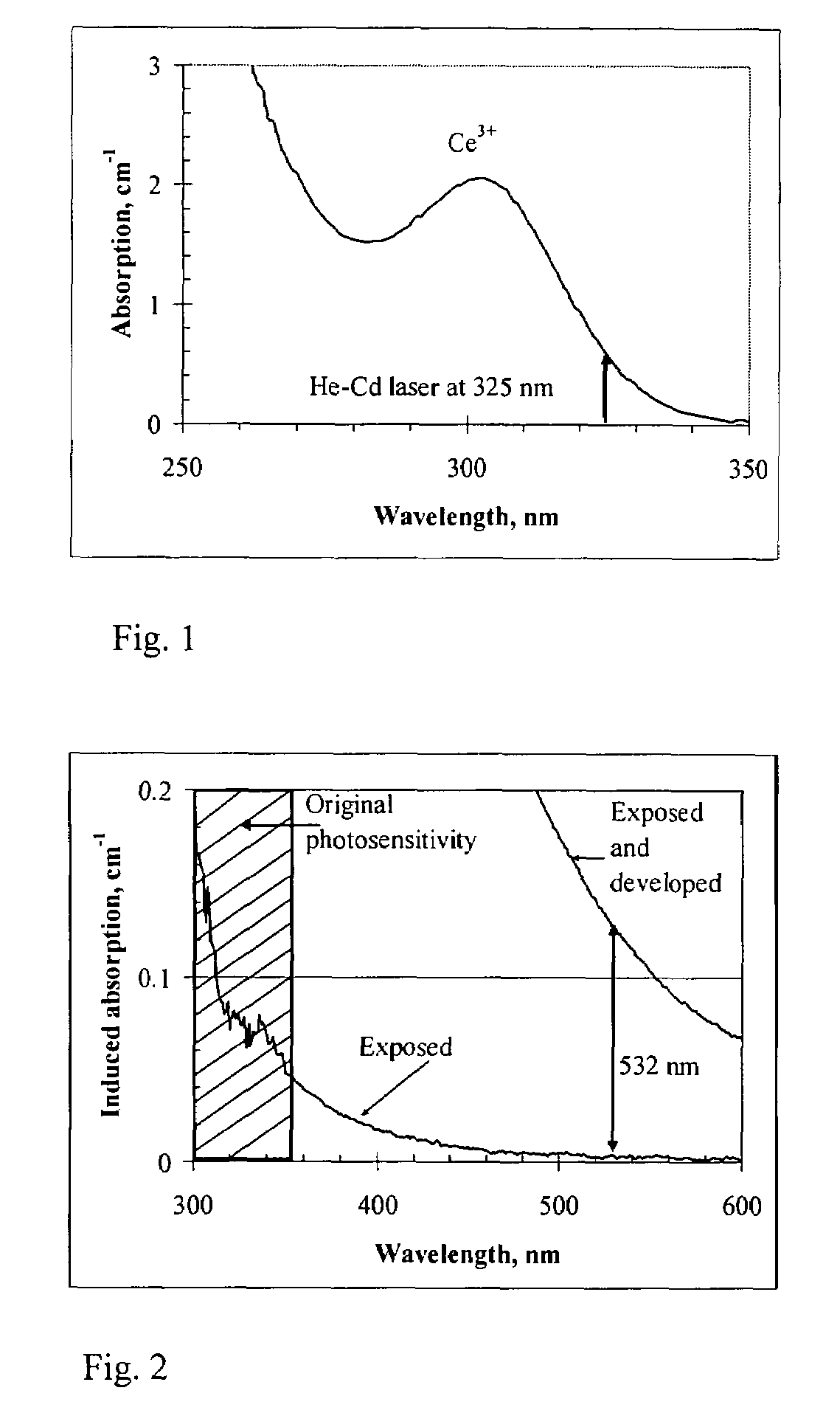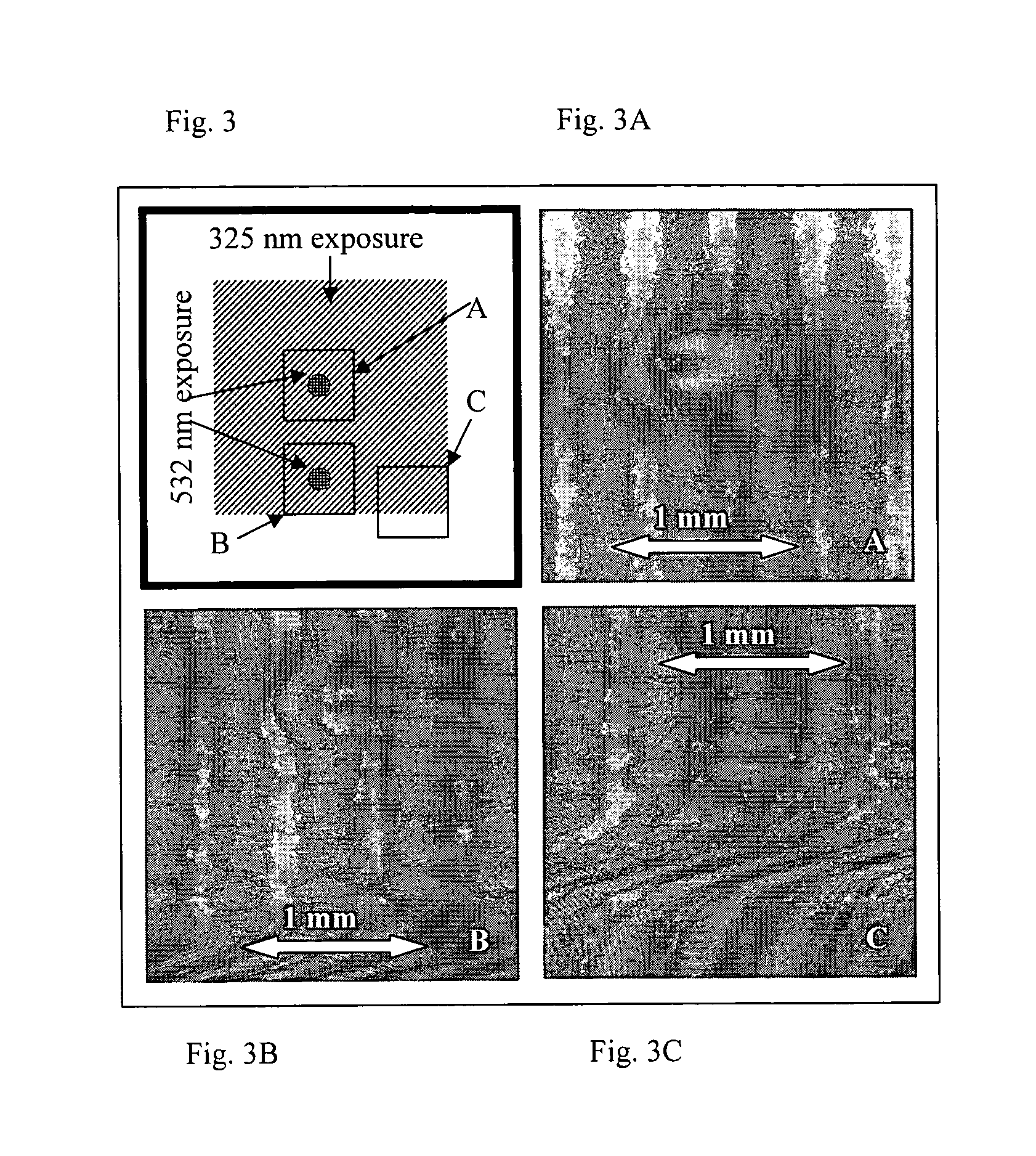Sensitization of photo-thermo-refractive glass to visible radiation by two-step illumination
a technology of photo-thermo-refractive glass and visible radiation, applied in the direction of instruments, hologram nature/properties, digital storage, etc., can solve the problems of significant shrinkage in the development process, low absolute diffraction efficiency of ptr glasses gratings, and materials that did not meet all requirements formulated in hariharan, etc., to achieve low noise and high resolution
- Summary
- Abstract
- Description
- Claims
- Application Information
AI Technical Summary
Benefits of technology
Problems solved by technology
Method used
Image
Examples
Embodiment Construction
[0030]Before explaining the disclosed embodiments of the present invention in detail, it is to be understood that the invention is not limited in its application to the details of any particular arrangements shown since the invention is capable of further embodiments. Also, the terminology used herein is for the purpose of description and not of limitation.
[0031]To overcome the drawbacks of the prior art in developing useful glass holograms, it was necessary to establish if the high losses (excessive scattering) are an intrinsic feature of photo sensitive refractive (PTR) glasses or, with proper choices of glass technology, conditions of exposure and / or thermal development, this phenomenon can be eliminated. To do this, studies were made of: PTR glass melting and samples preparation; absorption spectra of original, exposed and developed PTR glasses in the UV, visible and IR regions; Bragg grating optical properties versus conditions of PTR glass fabrication, UV exposure and thermal ...
PUM
 Login to View More
Login to View More Abstract
Description
Claims
Application Information
 Login to View More
Login to View More - R&D
- Intellectual Property
- Life Sciences
- Materials
- Tech Scout
- Unparalleled Data Quality
- Higher Quality Content
- 60% Fewer Hallucinations
Browse by: Latest US Patents, China's latest patents, Technical Efficacy Thesaurus, Application Domain, Technology Topic, Popular Technical Reports.
© 2025 PatSnap. All rights reserved.Legal|Privacy policy|Modern Slavery Act Transparency Statement|Sitemap|About US| Contact US: help@patsnap.com



